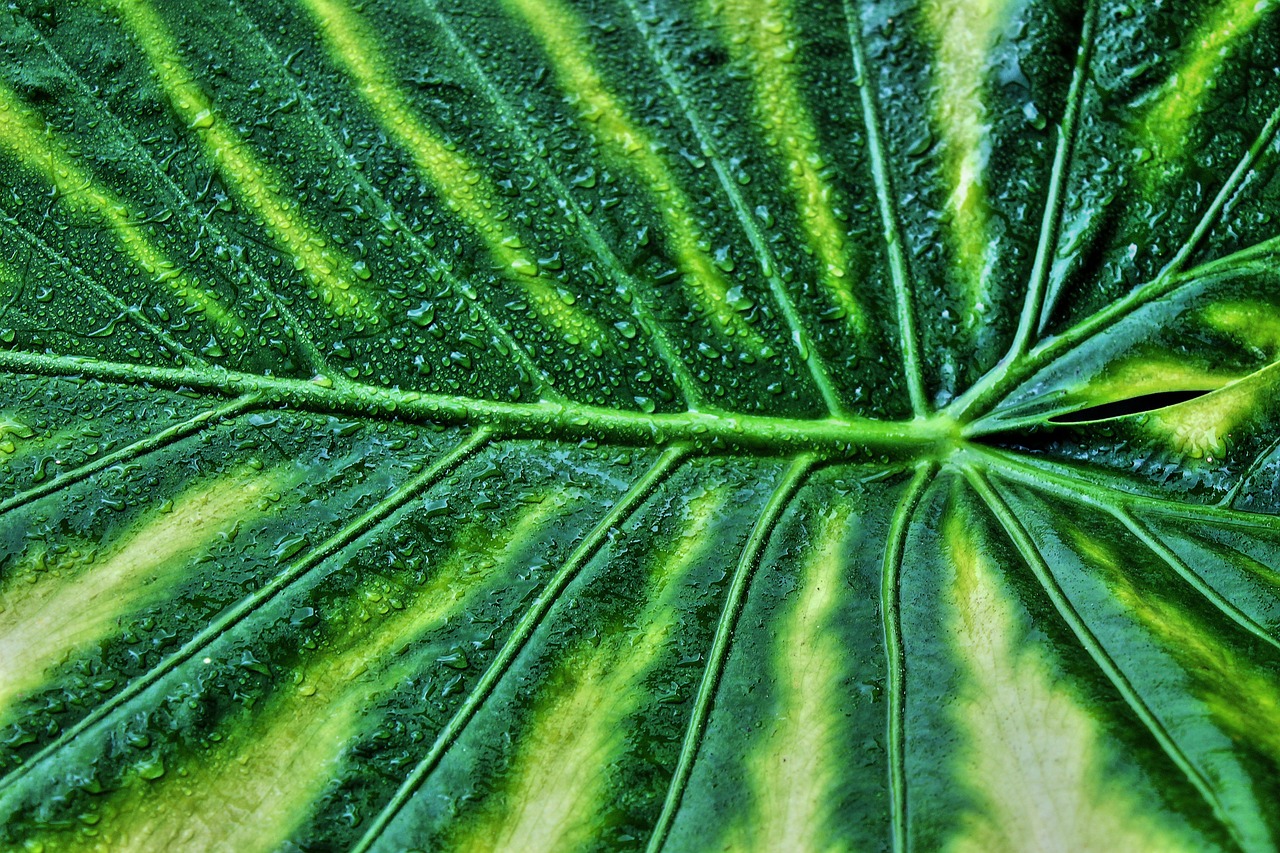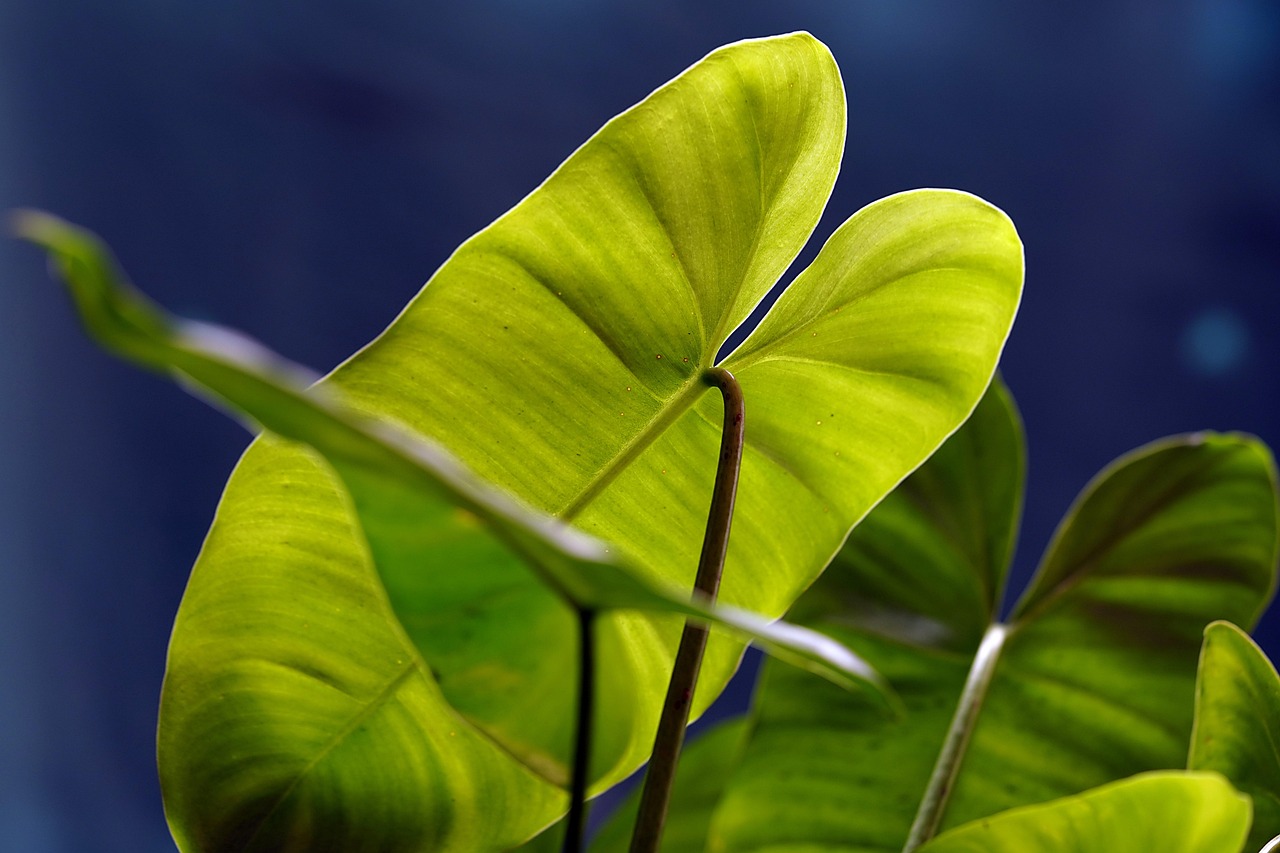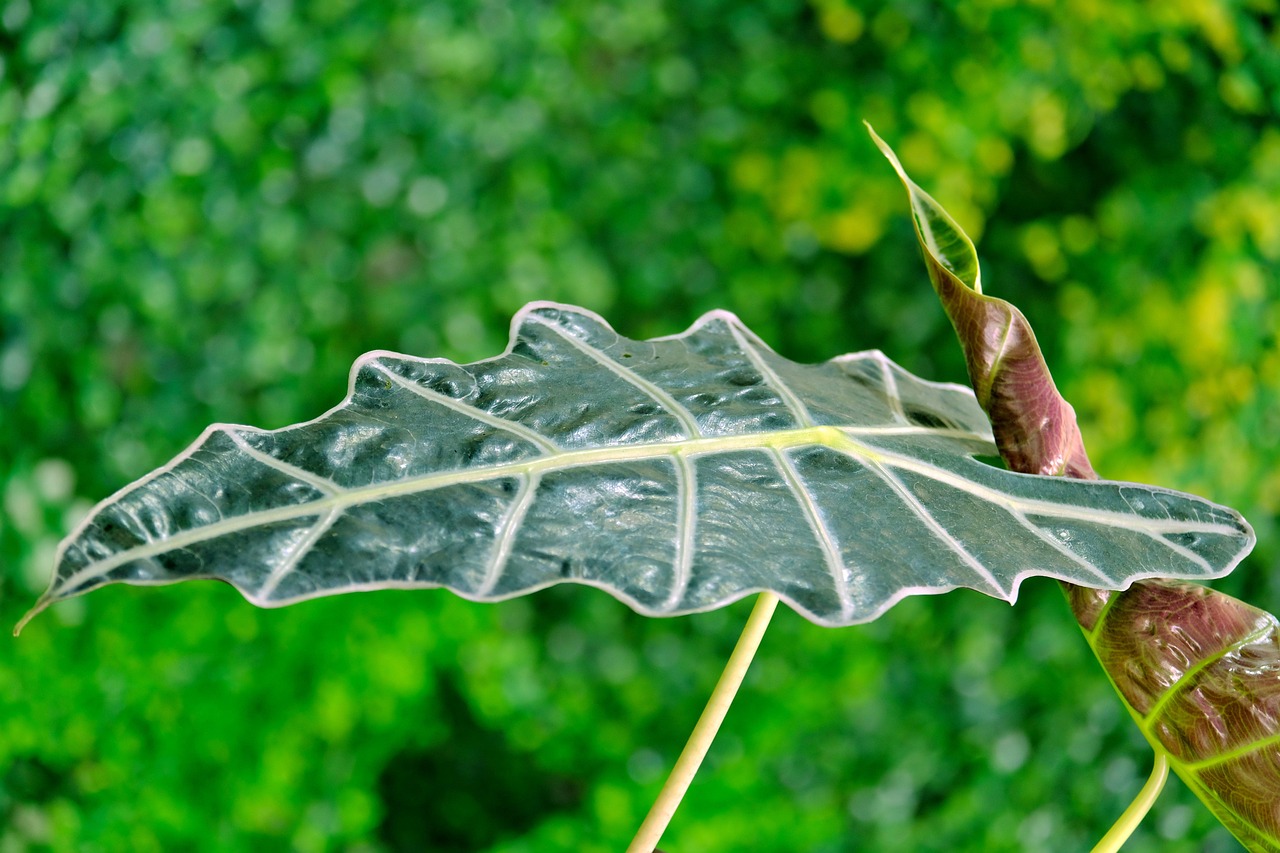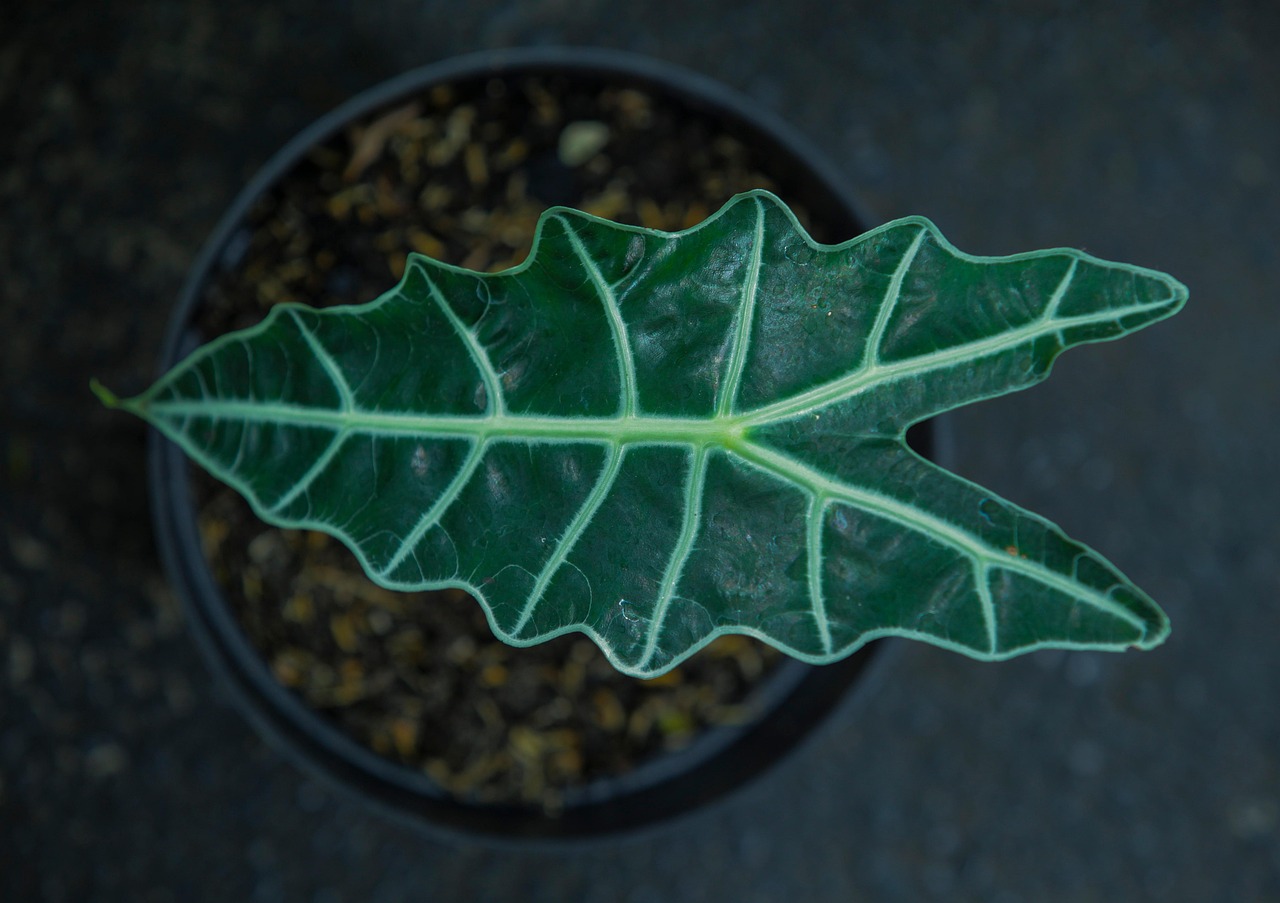The Alocasia Dwarf Amazonica, also known as African Mask Plant, requires bright indirect light, high humidity, and well-draining soil. Water it when the top inch of soil is dry, and provide monthly fertilization during the growing season. Proper care ensures vibrant foliage and healthy growth.
Understanding Alocasia Dwarf Amazonica

The Alocasia Dwarf Amazonica is a popular houseplant known for its striking, arrow-shaped leaves. Originating from tropical regions, this plant brings a touch of the exotic to any living space. Its dark green leaves often have prominent white veins, making it an eye-catching addition to your plant collection.
This compact variety is ideal for those with limited space. The Dwarf Amazonica typically grows to about 12 to 18 inches tall, making it suitable for tabletops, shelves, or as part of a larger indoor garden. Despite its small size, it does not compromise on visual impact. The dramatic foliage can serve as a focal point in any room.
To successfully care for an Alocasia Dwarf Amazonica, you must understand its specific environmental needs. This plant thrives in conditions that mimic its native habitat. Here are some key factors to consider:
| Care Aspect | Ideal Conditions |
|---|---|
| Light | Bright, indirect light |
| Humidity | High humidity (50-70%) |
| Watering | Water when top inch of soil is dry |
| Soil | Well-draining potting mix |
| Temperature | 65-80°F (18-27°C) |
Light Requirements
Light is crucial for the health of your Alocasia Dwarf Amazonica. This plant prefers bright, indirect light. Direct sunlight can scorch its leaves, causing damage and unsightly brown spots. Placing it near a window that filters sunlight or in a well-lit room can help meet its light needs.
If you notice the leaves stretching toward the light source, it indicates that your plant may need more light. On the other hand, yellowing leaves can suggest too much direct sunlight exposure. Adjusting its position can help maintain the right balance.
Humidity Levels
Humidity is another critical factor for the Alocasia Dwarf Amazonica. These plants thrive in high humidity environments. Ideally, humidity levels should be between 50% and 70%. Low humidity can lead to leaf curling, browning tips, and overall stress on the plant.
To increase humidity around your plant, consider using a humidifier or placing a tray of water with pebbles beneath the pot. Misting the leaves can also help but should not replace other humidity-boosting methods.
Watering Guidelines
Watering the Alocasia Dwarf Amazonica requires careful attention. The best practice is to water when the top inch of soil feels dry to the touch. Overwatering can lead to root rot, while underwatering may cause stress and damage to the plant.
During the growing season, typically spring and summer, this plant may require more frequent watering. In contrast, reduce watering during the fall and winter months when growth slows down. Always ensure that excess water drains out from the pot.
Soil Requirements
The choice of soil is essential for the health of your Alocasia Dwarf Amazonica. This plant thrives in well-draining potting mixes that can retain some moisture without becoming waterlogged. Using the right soil helps prevent root rot and keeps the plant healthy.
A suitable potting mix for your Alocasia should include a combination of the following components:
- Peat Moss: Retains moisture while providing aeration.
- Pine Bark: Aids in drainage and adds organic matter.
- Perlite: Enhances drainage and prevents soil compaction.
- Coconut Coir: Improves moisture retention and aeration.
You can either purchase a pre-mixed potting soil designed for tropical plants or create your own by combining these ingredients in equal parts. Ensuring that the soil is light and airy will help the roots access air and nutrients effectively.
Fertilizing Your Alocasia Dwarf Amazonica
Fertilization plays a significant role in promoting healthy growth for the Alocasia Dwarf Amazonica. During its active growing season, which typically spans from spring to early fall, this plant benefits from regular feeding.
Here are some tips for fertilizing your plant:
- Use a Balanced Fertilizer: A balanced, water-soluble fertilizer, such as a 20-20-20 formula, is ideal. Dilute it to half strength.
- Frequency: Fertilize once a month during the growing season. Stop fertilizing in the fall and winter months when the plant’s growth slows down.
- Application Method: Water the plant thoroughly before applying fertilizer. This helps prevent root burn and ensures better absorption.
Be cautious not to over-fertilize, as this can lead to salt buildup and harm the plant. Regularly flushing the soil with clean water every few months can help prevent this issue.
Pest Management
The Alocasia Dwarf Amazonica is generally resilient but can be susceptible to pests like spider mites, aphids, and mealybugs. Taking proactive measures can help keep these unwanted guests at bay.
Here are some strategies for managing pests:
- Regular Inspection: Check your plant frequently for signs of pests. Look under leaves and along stems for any unusual spots or webs.
- Cleaning Leaves: Wipe the leaves with a damp cloth regularly to remove dust, which can attract pests. This practice also helps improve photosynthesis.
- Pest Control Methods: If you notice an infestation, treat it immediately. You can use insecticidal soap or neem oil as natural remedies. Apply according to package instructions.
Repotting Your Alocasia Dwarf Amazonica
Repotting is an important aspect of care for your Alocasia Dwarf Amazonica. As this plant grows, it may outgrow its current pot, leading to root crowding and nutrient deficiencies. Generally, repotting is recommended every 1-2 years, or when you see roots emerging from the drainage holes.
Here are steps to successfully repot your plant:
- Select the Right Pot: Choose a pot that is 1-2 inches larger in diameter than the current one, ensuring it has drainage holes.
- Prepare Fresh Soil: Use the well-draining potting mix discussed earlier to provide a healthy environment for your plant.
- Remove the Plant Carefully: Gently take the Alocasia out of its current pot. Be cautious not to damage the roots during this process.
- Inspect Roots: Check for any signs of rot or disease. Trim away any unhealthy roots with clean scissors.
- Repotting: Place the plant in the new pot and fill it with fresh soil, ensuring that the root ball is at the same depth as before. Water thoroughly after repotting.
Repotting not only provides fresh nutrients but also promotes healthy growth by giving the roots ample space to expand. It’s an excellent opportunity to refresh your plant’s environment and encourage new growth.
Common Problems and Solutions
C

aring for the Alocasia Dwarf Amazonica can sometimes present challenges. Recognizing potential issues early can help you resolve them quickly and keep your plant healthy. Below are some common problems and their solutions.
Yellowing Leaves
One of the most frequently encountered issues is yellowing leaves. This can occur due to several reasons:
- Overwatering: Excess moisture in the soil can lead to root rot, causing the leaves to turn yellow. Ensure the pot has good drainage and allow the soil to dry out before watering again.
- Underwatering: On the other hand, lack of water can also cause leaves to yellow. Check the soil moisture regularly and adjust your watering schedule accordingly.
- Poor Lighting: Insufficient light can lead to inadequate photosynthesis, resulting in yellowing leaves. Ensure your plant receives bright, indirect light.
Leaf Curling
Leaf curling is another common issue that can indicate stress in the plant. Possible causes include:
- Low Humidity: Alocasia plants thrive in high humidity. If the air is too dry, leaves may curl. Increase humidity using a humidifier or by misting the leaves.
- Heat Stress: Exposure to extreme temperatures or hot drafts can cause curling. Keep your plant in a stable environment away from direct heat sources.
Browning Leaf Tips
Browning leaf tips often signal that your plant is not receiving adequate care. Here are some common reasons:
- Low Humidity: As previously mentioned, low humidity can lead to browning tips. Increasing humidity levels should help alleviate this problem.
- Over-fertilization: Excess fertilizer can cause salt buildup, leading to leaf burn. If you suspect over-fertilization, flush the soil with water to remove excess salts.
Propagation Techniques
P

ropagating your Alocasia Dwarf Amazonica can be a rewarding experience. This process allows you to create new plants from your existing one, expanding your collection or sharing with friends. The most common method for propagating this plant is through division.
Dividing the Plant
Dividing your Alocasia Dwarf Amazonica is best done during the spring or early summer when the plant is actively growing. Follow these steps for successful propagation:
- Prepare Your Tools: Gather clean scissors or pruning shears and a new pot with fresh potting mix.
- Remove the Plant from Its Pot: Gently take the plant out of its pot, being careful not to damage the roots.
- Identify Natural Divisions: Look for sections of the root system that can be separated easily. Each division should have a healthy amount of roots and at least one leaf.
- Make the Cuts: Using clean scissors, cut through the roots to separate the divisions.
- Replant Divisions: Place each division in its new pot with fresh soil, ensuring they are planted at the same depth as before. Water lightly after repotting.
Seasonal Care Adjustments
Understanding how seasonal changes affect your Alocasia Dwarf Amazonica is crucial for maintaining its health year-round. The growing season typically runs from spring to early fall, while dormancy occurs in the fall and winter months.
Spring and Summer Care
During the growing season, your plant will be more active and require different care:
- Increased Watering: Be vigilant about checking soil moisture, as your plant will need more frequent watering.
- Regular Fertilization: Feed your plant monthly with a balanced fertilizer to support growth.
- Optimal Light Exposure: Ensure it receives adequate bright, indirect light to promote healthy leaf development.
Fall and Winter Care
As temperatures drop and daylight decreases, your Alocasia Dwarf Amazonica will enter a dormant phase:
- Reduce Watering: Cut back on watering frequency as the plant’s growth slows down. Allow the top inch of soil to dry out before watering.
- No Fertilization: Avoid fertilizing during dormancy, as the plant does not require additional nutrients at this time.
- Avoid Cold Drafts: Keep your plant away from cold windows or doors that could expose it to chilly drafts.
By adjusting your care routine according to seasonal needs, you can help ensure that your Alocasia Dwarf Amazonica remains vibrant and healthy throughout the year.
Additional Care Tips
In

addition to the core care practices already discussed, there are several additional tips that can help you maintain a thriving Alocasia Dwarf Amazonica. These practices focus on enhancing the overall health and appearance of your plant.
Cleaning Leaves
Keeping the leaves of your Alocasia Dwarf Amazonica clean is essential for its health. Dust can accumulate on leaves, blocking sunlight and inhibiting photosynthesis. Regularly wiping the leaves with a damp cloth helps maintain their vibrancy and allows the plant to breathe better.
Supporting Growth
If your Alocasia begins to outgrow its natural structure or if the stems become leggy, consider providing support. You can use stakes or small trellises to help the plant maintain its upright position. This support can be especially useful during the growing season when the plant’s leaves are fuller and heavier.
Monitoring for Disease
In addition to pests, be vigilant about potential diseases that can affect your plant. Common signs of disease include:
- Wilting Leaves: This can indicate root rot or insufficient water.
- Black Spots: Often a sign of fungal infections, which can occur if the plant is overwatered or humidity is too high.
- Moldy Soil: White mold on the surface of the soil is a warning sign that drainage is inadequate.
If you notice these symptoms, take action immediately. Adjust watering habits, improve air circulation around the plant, or treat with appropriate fungicides if necessary.
Choosing the Right Container
The type of container you choose for your Alocasia Dwarf Amazonica can also impact its health. Here are some factors to consider:
- Material: Terracotta pots allow for better airflow and moisture evaporation, while plastic pots retain moisture longer.
- Drainage Holes: Always ensure your pot has sufficient drainage holes to prevent water from accumulating at the bottom.
- Size: Choose a pot that allows for growth but is not excessively large, as this can lead to overwatering issues.
Final Thoughts
Caring for an Alocasia Dwarf Amazonica can be a rewarding experience that enhances your home’s interior. With its stunning foliage and unique appearance, this plant can thrive with proper attention and care. Remember to provide adequate light, humidity, and water while monitoring for pests and diseases.
Consider the seasonal changes and adjust your care routine accordingly. Whether you’re maintaining your existing plant or propagating new ones, understanding the specific needs of the Alocasia Dwarf Amazonica will contribute significantly to its vitality. By following these guidelines and being attentive to its requirements, you can enjoy a healthy and beautiful Alocasia that brightens your living space.
With patience and dedication, you will witness the growth and flourishing of your Alocasia Dwarf Amazonica, making it a cherished part of your plant collection for years to come.
